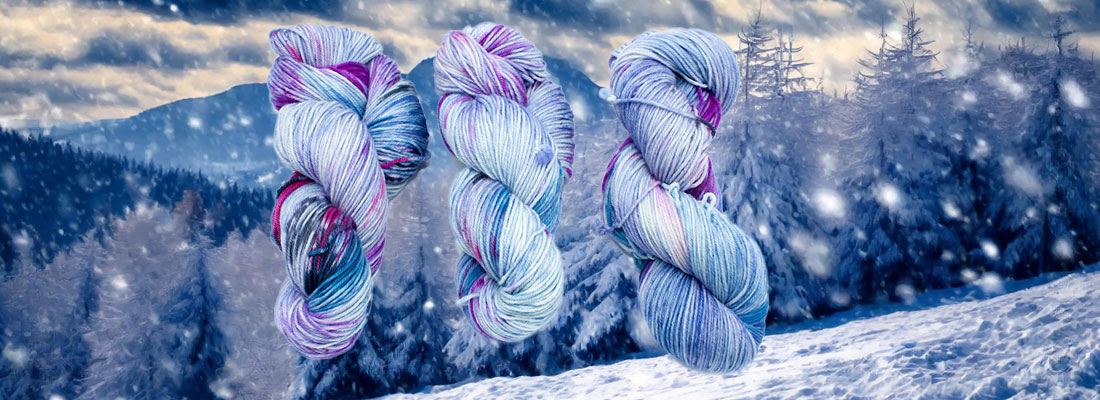Bare yarn, Tutorials & Tips, Yarn Dyes
The captivating art of snow dyeing: When winter inspires creativity
The world of textiles and dyeing offers a multitude of artistic techniques, but snow dyeing emerges as a truly unique and inspiring method. Combining winter elements with the dyeing process, snow dyeing offers spectacular and unpredictable results.
What is snow dyeing?
Snow dyeing gets its name from the fact that snow is a crucial element in the dyeing process. Unlike traditional techniques, snow dyeing exploits the special texture created by melting snow. The basic steps of the process include applying dyes to the snow, which then melt and blend with textile fibers, creating unique and organic patterns.
Materials needed
To try snow dyeing, you will need a few key elements:
- Dye: Popular dyes like Jacquard, Greener Shades, or Ashford work well.
- Wool or fiber: Bare yarn (fiber) to bring out the colors.
- Citric Acid: Citric acid will fix the dye.
- Snow: The main ingredient! The texture and melting of the snow will influence the final patterns.
The Process
In a pot, immerse skeins of yarn that have been soaked in water for 10 to 20 minutes. Gently squeeze the wool.
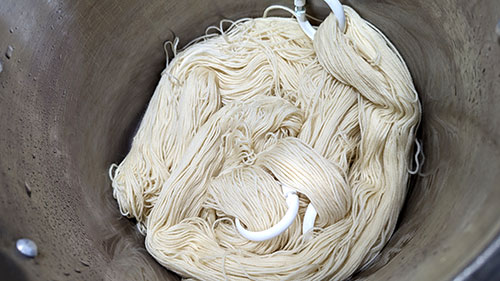
Add approximately 5 cm of fresh white snow.
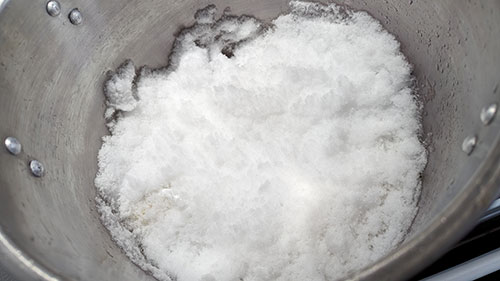
Sprinkle dye powder in small amounts directly onto the snow. It’s better to start with less and add more later.
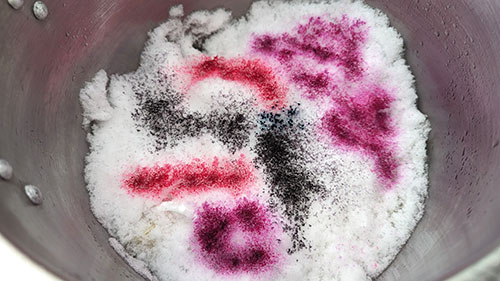
After 30 to 45 minutes, you’ll notice the dye has spread to the snow.
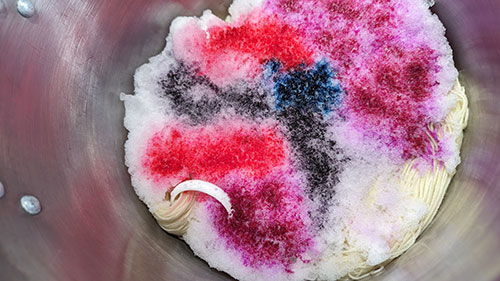
Once the snow has melted (around 3 to 4 hours), add water to the pot.
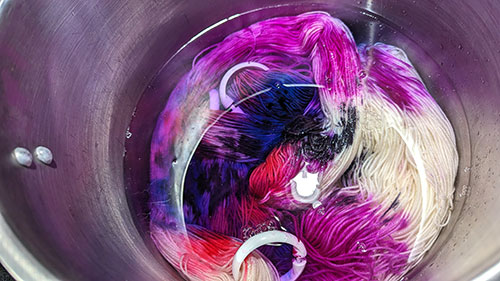
Slowly heat the wool until you see steam (a little smoke, but without boiling). After 5 minutes, add citric acid (about 1 tablespoon) and gently mix with the water.
Let it simmer (with steam) for about 20 to 30 minutes. Then let the wool cool and rinse with room temperature water. Wool doesn’t like temperature shocks (sudden temperature changes).
Let your yarn dry, and behold the result.
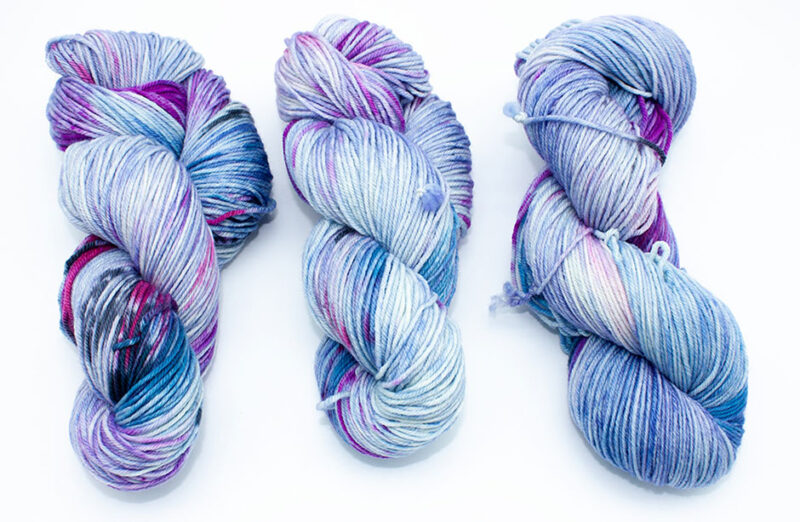
The magic of results
What makes snow dyeing so captivating is the element of unpredictability. The emerging patterns depend on various factors, such as how the snow melts and how the dyes react to each other. This creates infinitely varied results, ranging from delicate gradients to vibrant color explosions. As the results are random, it’s challenging to reproduce the same yarn twice.
Creativity and experimentation
Snow dyeing encourages artistic experimentation. You can play with the amount of snow used, dye colors, and even incorporate folding techniques to achieve specific patterns. The playful aspect of this technique allows you to unleash your imagination and discover unique results with each dyeing session.
Conclusion
By exploring snow dyeing, you’ll discover an artistic avenue that captures the magic of winter while offering surprising results. With the unique texture created by melting snow and the artistic freedom it allows, snow dyeing stands as a must-try technique for those seeking a creative and seasonal approach to dyeing. So, let yourself be carried away by winter and create a unique, dazzling yarn through the enchanting art of snow dyeing.
Will you give it a try? Share your experiences in the comments and showcase your photos on our Facebook page.

 English
English Français
Français
